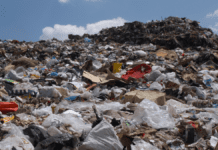
The earth has finite resources, and at some point, society will run low or even run out entirely of certain resources that it currently takes for granted. When that happens, materials discarded into landfills as waste are set to become a valuable commodity. That’s why the waste industry should be talking more about landfill mining, says Chris Williams, founder and CEO of ISB Global, a UK-based software and solutions provider for the global waste management and recycling sector. His views are presented here in an article authored by the firm.
“For too long, businesses and governments have acted as if the earth’s supply of certain material resources is inexhaustible,” said Williams. “We’ve chosen to bury these valuable materials in landfills when we think we’ve finished with them. But the world is about to realise we need those materials sooner than we think.
“Over the last few years, significant effort has gone in to reducing the amount of waste that ends up in landfills. We are making progress: in the UK in 2010, we sent 12.9 million tonnes of municipal waste to landfill. By 2020, that amount had fallen to 6.1 million tonnes.
“But not every country is reducing its landfill impact. In countries where the population is rising, economic development is taking place, and where knowledge and awareness of environmental issues are limited, landfill sites are growing, not shrinking.
“Landfill mining involves sifting through and extracting useful and valuable materials from landfills – such as glass, particular metals, plastics, textiles, brick, stone and cement – to be reused, recycled, refined and resold,” explained Williams. “It puts more ‘existing’ material back into the economy and creates valuable secondary markets while reducing the amount of dormant waste at landfill sites.”
But currently the main challenge for waste management companies considering landfill mining is to do it safely, efficiently and profitably. Many landfill sites are built with environmental safeguards in place. However, other sites don’t have these safety measures and contain a range of hazards, which if disturbed, affect people and communities living and working nearby by contaminating water supplies, releasing greenhouse gases into the atmosphere, and damaging soil.
“We’re going to need to return to our landfills and explore how to recover the valuable materials deposited in them – the challenge is, how to do so safely,” said Williams. “Over the next 10-20 years, expect to see an increase in businesses – including those already operating in the waste and recycling management space – set up safe, approved mining operations that become new income streams while also helping to drive a more circular economy.
“If we are to work with the planet rather than against it, we need to transition to a circular economy. Use recycled or pre-used materials instead of extracting or manufacturing entirely new ‘virgin’ materials from scratch is a central tenet of this transition,” he added.
“Done properly, landfill mining is a chance to create new jobs, reuse more materials, reduce landfill impact and work towards a more sustainable world. It’s already happening in different countries around the world. It’s only going to become more commonplace as business and industry looks for ways to move away from their dependence on the earth’s finite and increasingly depleted resources.”






